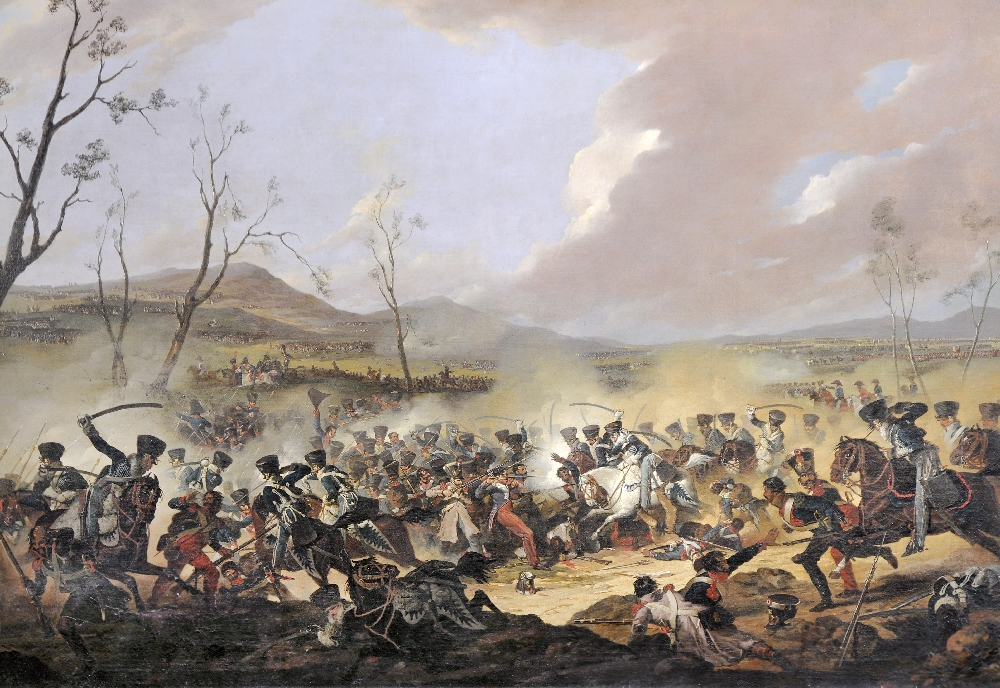|
King's Newton
Kings Newton is a village in South Derbyshire. The population of the village is included in Melbourne. The Holy well (pictured) was constructed around 1660, but has been refurbished at the end of the twentieth century. History Unlike many villages in Derbyshire, Kings Newton is not mentioned in the Domesday book and is a "new town". Originally the hamlet was called Newton but the prefix of ''Kings'' was added to differentiate it from other ''Newtons'' in the surrounding counties. After the successful campaign at the Battle of Sobraon, Henry Hardinge was created Viscount Hardinge of Lahore and of King's Newton in Derbyshire, with a pension of £3000 for three lives. Why this small village was chosen for his honour is unclear. The hall illustrated was built in 1560 and was extensively damaged by fire in 1859. It was fully restored in 1910 by Cecil Paget and his first wife. The illustration is from a book of poetry by local naturalist, John Joseph Briggs, whose poem about the Tr ... [...More Info...] [...Related Items...] OR: [Wikipedia] [Google] [Baidu] |
South Derbyshire
South Derbyshire is a local government district in Derbyshire, England. The population of the local authority at the 2011 Census was 94,611. It contains a third of the National Forest, and the council offices are in Swadlincote. The district also forms part of the wider Burton upon Trent and Swadlincote Green Belt, which covers the towns of Burton-upon-Trent in East Staffordshire and Swadlincote in South Derbyshire. The district is also landlocked between the districts of Derby, Derbyshire Dales, East Staffordshire, Erewash District, Lichfield District, North Warwickshire, North West Leicestershire and Tamworth. The district was formed on 1 April 1974 as a merger of the Swadlincote urban district along with Repton Rural District and part of South East Derbyshire Rural District. Settlements Settlements in the district include: *Aston-on-Trent *Barrow upon Trent, Boulton Moor, Bretby *Calke, Castle Gresley, Cauldwell, Church Gresley, Church Broughton, Coton in the Elms *C ... [...More Info...] [...Related Items...] OR: [Wikipedia] [Google] [Baidu] |
Melbourne, Derbyshire
Melbourne () is a market town and civil parish in South Derbyshire, England. It was home to Thomas Cook, and has a street named after him. It is south of Derby and from the River Trent. The population of the civil parish at the 2011 Census was 4,843. Toponymy The name Melbourne means "mill stream", i.e. the mill by the stream. It was first recorded in Domesday Book (DB 1086 Mileburne = mill stream) as a royal manor. Through William Lamb, 2nd Viscount Melbourne, Melbourne is the namesake of the Australian city. History A parish church building dates from around 1120. In 1311, Robert de Holand fortified the existing royal manor house to form Melbourne Castle, though the fortification was never completed. Jean, duc de Bourbon, the most important French prisoner taken at the Battle of Agincourt (1415), was detained at the castle for 19 years. Plans envisaged imprisoning Mary, Queen of Scots at Melbourne Castle in the 16th century, but it had deteriorated into a poor state of ... [...More Info...] [...Related Items...] OR: [Wikipedia] [Google] [Baidu] |
Holy Well
A holy well or sacred spring is a well, spring or small pool of water revered either in a Christian or pagan context, sometimes both. The water of holy wells is often thought to have healing qualities, through the numinous presence of its guardian spirit or Christian saint. They often have local legends associated with them; for example in Christian legends, the water is often said to have been made to flow by the action of a saint. Holy wells are often also places of ritual and pilgrimage, where people pray and leave votive offerings. In Celtic regions, strips of cloth are often tied to trees at holy wells, known as clootie wells. Names The term ''haeligewielle'' is in origin an Anglo-Saxon toponym attached to specific springs in the landscape; its current use has arisen through folklore scholars, antiquarians, and other writers generalising from those actual 'Holy Wells', which survived into the modern era. The term 'holy-hole' is sometimes employed.A. Ross, ''Pagan Celt ... [...More Info...] [...Related Items...] OR: [Wikipedia] [Google] [Baidu] |
Derbyshire
Derbyshire ( ) is a ceremonial county in the East Midlands, England. It includes much of the Peak District National Park, the southern end of the Pennine range of hills and part of the National Forest. It borders Greater Manchester to the north-west, West Yorkshire to the north, South Yorkshire to the north-east, Nottinghamshire to the east, Leicestershire to the south-east, Staffordshire to the west and south-west and Cheshire to the west. Kinder Scout, at , is the highest point and Trent Meadows, where the River Trent leaves Derbyshire, the lowest at . The north–south River Derwent is the longest river at . In 2003, the Ordnance Survey named Church Flatts Farm at Coton in the Elms, near Swadlincote, as Britain's furthest point from the sea. Derby is a unitary authority area, but remains part of the ceremonial county. The county was a lot larger than its present coverage, it once extended to the boundaries of the City of Sheffield district in South Yorkshire where it cov ... [...More Info...] [...Related Items...] OR: [Wikipedia] [Google] [Baidu] |
Domesday Book
Domesday Book () – the Middle English spelling of "Doomsday Book" – is a manuscript record of the "Great Survey" of much of England and parts of Wales completed in 1086 by order of King William I, known as William the Conqueror. The manuscript was originally known by the Latin name ''Liber de Wintonia'', meaning "Book of Winchester", where it was originally kept in the royal treasury. The '' Anglo-Saxon Chronicle'' states that in 1085 the king sent his agents to survey every shire in England, to list his holdings and dues owed to him. Written in Medieval Latin, it was highly abbreviated and included some vernacular native terms without Latin equivalents. The survey's main purpose was to record the annual value of every piece of landed property to its lord, and the resources in land, manpower, and livestock from which the value derived. The name "Domesday Book" came into use in the 12th century. Richard FitzNeal wrote in the ''Dialogus de Scaccario'' ( 1179) that the book ... [...More Info...] [...Related Items...] OR: [Wikipedia] [Google] [Baidu] |
Battle Of Sobraon
The Battle of Sobraon was fought on 10 February 1846, between the forces of the East India Company and the Sikh Khalsa Army, the army of the Sikh Empire of the Punjab. The Sikhs were completely defeated, making this the decisive battle of the First Anglo-Sikh War. Background The First Anglo-Sikh war began in late 1845, after a combination of increasing disorder in the Sikh empire following the death of Ranjit Singh in 1839 and provocations by the British East India Company led to the Sikh Khalsa Army invading British territory. The British had won the first two major battles of the war through a combination of luck, the steadfastness of British and Bengal units and deliberate treachery by Tej Singh and Lal Singh, the commanders of the Sikh Army. On the British side, the Governor General, Sir Henry Hardinge, had been dismayed by the head-on tactics of the Bengal Army's commander-in-chief, Sir Hugh Gough, and was seeking to have him removed from command. However, no commander s ... [...More Info...] [...Related Items...] OR: [Wikipedia] [Google] [Baidu] |
Henry Hardinge
Henry Hardinge, 1st Viscount Hardinge, (30 March 1785 – 24 September 1856) was a British Army officer and politician. After serving in the Peninsular War and the Waterloo Campaign he became Secretary at War in Wellington's ministry. After a tour as Chief Secretary for Ireland in 1830 he became Secretary at War again in Sir Robert Peel's cabinet. He went on to be Governor-General of India at the time of the First Anglo-Sikh War and then Commander-in-Chief of the Forces during the Crimean War. Army career The son of the Rev, Henry Hardinge, Rector of Stanhope, and his wife Frances Best, he was educated at Durham School and Sevenoaks School. Hardinge entered the British Army on 23 July 1799 as an ensign in the Queen's Rangers, a corps then stationed in Upper Canada. He was promoted to lieutenant by purchase in the 4th Regiment of Foot on 27 March 1802 and transferred to the 1st Regiment of Foot on 11 July 1803 before becoming a captain of a company by purchase in the 57th R ... [...More Info...] [...Related Items...] OR: [Wikipedia] [Google] [Baidu] |
Lahore
Lahore ( ; pnb, ; ur, ) is the second most populous city in Pakistan after Karachi and 26th most populous city in the world, with a population of over 13 million. It is the capital of the province of Punjab where it is the largest city. Lahore is one of Pakistan's major industrial and economic hubs, with an estimated GDP ( PPP) of $84 billion as of 2019. It is the largest city as well as the historic capital and cultural centre of the wider Punjab region,Lahore Cantonment globalsecurity.org and is one of Pakistan's most , progressiv ... [...More Info...] [...Related Items...] OR: [Wikipedia] [Google] [Baidu] |
Cecil Paget
Sir Cecil Walter Paget (19 October 1874 – 9 December 1936),''Who was who'', 1941 was an English locomotive engineer and railway administrator. Cecil Paget was the son of Sir George Ernest Paget, Chairman of the Midland Railway Company (MR) 1890-1911. He was born in Sutton Bonington, Nottinghamshire, educated at Harrow and Pembroke College, Cambridge, and then joined the MR as an engineering pupil of S. W. Johnson, the company's Locomotive Superintendent. Paget rose quickly to become Works Manager at the main Derby Works from 1904, under Johnson's successor R. M. Deeley. He was also Deeley's deputy. Promotion April 1907 saw Paget appointed General Superintendent of the MR by the new General Manager Guy Granet. The role, which would now be called Chief Operating Officer, was expanded from that of the previous 'Superintendent of the Line' and put him in charge of the daily running of the locomotive department, which was formerly a responsibility of his erstwhile boss, Dee ... [...More Info...] [...Related Items...] OR: [Wikipedia] [Google] [Baidu] |
Marjorie Bates
Marjorie Christine Bates R.A. (1882–1962) was born in Kings Newton, near Melbourne, Derbyshire. She was a painter who exhibited at the Royal Academy''Royal Academy exhibitors, 1905-70: a dictionary of artists and their work in the Summer Exhibitions of the Royal Academy of Arts. Vol. 1: A-Car''. East Ardsley, Wakefield: EP Publishing, 1973. – . in London and Paris and achieved a moderate living from her paintings. Biography Bates was the daughter of George and Emily Bates who had made money from the sale of mosquito netting.Bates at Panventu.com accessed 29 December 2007 Her family moved to in Nottinghamshire where she attended the [...More Info...] [...Related Items...] OR: [Wikipedia] [Google] [Baidu] |




